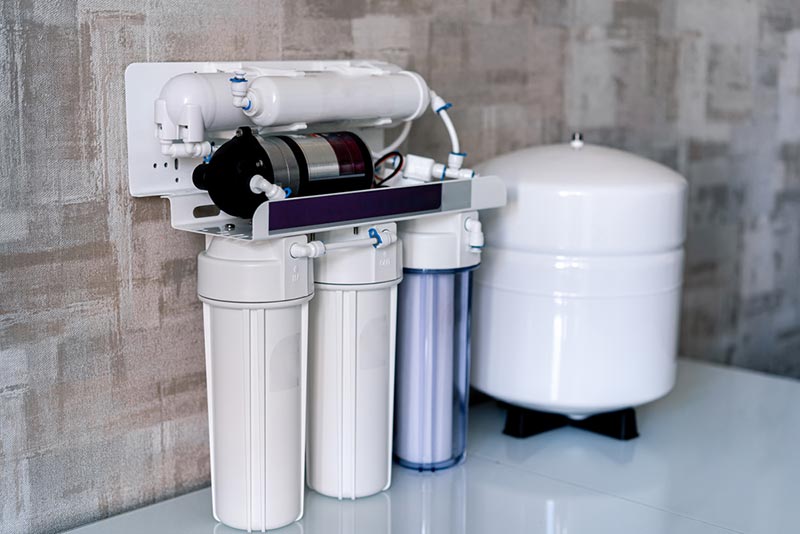Who Invented the Reverse Osmosis Water Filtration Process, And When?
-

- Last updated:

The reverse osmosis process is an innovative way to purify water using only a few household items. The process involves forcing water through a semipermeable membrane that allows certain types of contaminants to pass through but keeps other substances from entering the water.
The reverse osmosis process was invented in the early 20th century, but it wasn’t widely adopted until much later. In this post, we’ll discuss how scientists stumbled upon this technology and the challenges they faced along the way.

How Was Reverse Osmosis Invented?
French physicist Jean Antoine Nollet is credited with discovering the reverse osmosis process around 1748. Using a pig’s bladder to diffuse water, his experiments led to further experiments in later centuries.
In the 1950s, a group of American engineers were tasked with finding a way to make osmosis more efficient for the purpose of purifying water.
They were able to force water through a ceramic membrane using a pressure pump, which was a major discovery. They continued to research the process and make improvements. Engineers discovered that the water going through the membrane was moving too slowly for practical use. So, they found a way to speed up the process. They also developed a membrane that allowed certain things to pass through but kept other contaminants from passing through.

Engineers Discover a New Way to Purify Water
The engineers had discovered a new way to purify water, but they had to convince others to see the potential of their work. The group teamed up with Southeastern University and the University of Florida to test the osmosis process on different types of water.
They found that osmosis was effective at removing minerals and salts from the water, which was the first hurdle they needed to clear. They also discovered that osmosis could be used to remove other contaminants, such as bacteria and viruses, from the water.
How Reverse Osmosis Became Commercialized
The engineers had discovered a new way to purify water, but they still had to commercialize the process. They had to create a working model of their process and find a way to build and install the filters at an affordable cost. Unfortunately, the group ran out of funding as they were trying to scale up the production process. But they didn’t give up. They kept studying the process. The idea for reverse osmosis was picked up on a global scale as it drew the attention of engineers around the world. This led to more programs to test this process, which in turn led to more funding, and now the reverse osmosis process has only continued to grow and help people all over the world.

Conclusion
French physicist Jean Antoine Nollet is credited with inventing the reverse osmosis process. This filtration system is a great way to purify water that’s contaminated. The process involves forcing water through a semipermeable membrane that allows certain types of contaminants to pass through but keeps other substances from entering the water.
Engineers were researching osmosis in the early 20th century, but continued to research the process until the 1950s, when they made the biggest breakthrough, soon after which it became commercialized.
Featured Image Credit: Terelyuk, Shutterstock
Contents

